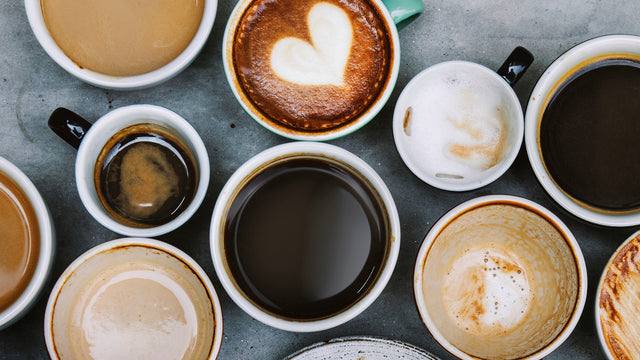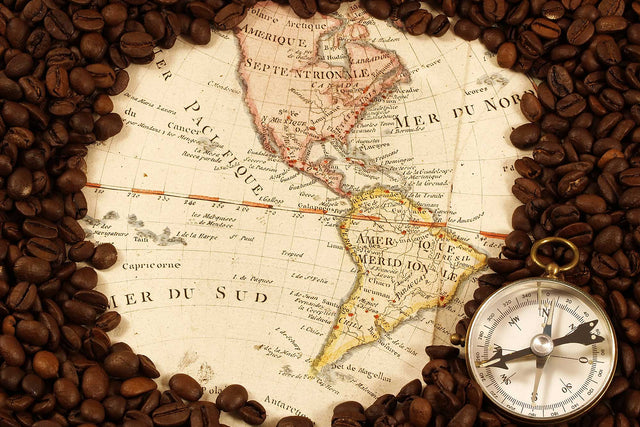While coffee-lovers claim to brew the perfect cup of coffee every morning without fail, it’s worth noting that not every cup of coffee is equal. Brewed coffee can vary wildly in its flavor and chemical make-up, particularly the chemicals linked to health benefits. Everything that happens before the pour—from the bean selection, roast, grind, water, and brew method—can affect the taste and quality of your morning cup of coffee. Let's take a look at these components to understand how a perfect cup of coffee is brewed.
The Components of Coffee
How many chemicals do you think are in coffee? 20? 100? The answer is far greater, at more than 1,000 chemicals! While you might not like the idea of drinking chemicals, you have to remember that they're just compounds and substances. While scientists haven’t yet tested out each chemical for close examination, they have nailed down the big players in terms of taste and potential health benefits. Here are some key components to keep in mind when brewing the perfect cup of coffee:
Caffeine: Thanks to coffee drinking, this stimulant is one of the most widely consumed psychoactive drugs worldwide. Caffeine enhances perception, reduces fatigue, increases abilities to stay awake, and may help improve long-term memory.
Chlorogenic acids: Around 45 of these compounds have been found in coffee. Along with their breakdown product caffeic acid, the compounds have been linked to lower risks of cardiovascular disease and type 2 diabetes. They have also been shown to have anti-inflammatory and antibacterial properties.
Trigonelline: This alkaloid has been linked to protecting the brain from damage, blocking cancer cells from moving around, combating bacteria, and lowering blood sugar and total cholesterol.
Cafestol These diterpenes, which contribute to the bitter taste of coffee, have been linked to preventing and battling cancer cells. However, they’ve also been linked to raising cholesterol.
When brewing the perfect cup of coffee, it's important to pay attention to these compounds to maximize the benefits you get. Too much or too little of these could lead to a below average cup of coffee (which nobody wants).
The Coffee Bean
Arabica is the most common bean, noted for its aroma and balanced flavors. Arabica tends to have more trigonelline and cafestol. Robusta beans, on the other hand, tend to have more caffeine and chlorogenic acids.
On the other hand, Robusta beans have a significant more amount of caffeine. You can find these beans being brewed mostly in espressos and instant coffees. Not sure what an espresso or instant coffee is? Check out our The Different Types of Coffee blog post here!
The Coffee Roast
There’s no standard method for firing up beans or determining roast strengths (light to dark). But, generally, beans are baked somewhere between 180 and 250 degrees Celsius for somewhere between 2 and 25 minutes. The process takes green beans, which have a mild, bean-like smell and makes them into delicious, toasty brown beans. During the scorch, sugars and fats degrade, amino acids and sugars react with each other, and degradation products spark chain reactions.
Contrary to some common beliefs, the amount of caffeine in the beans doesn’t change that much with roasting. Some studies have reported slight decreases in caffeine in darker roasts, but some have found no differences.
The Water You Use
One might assume that clean, distilled water with no contaminating chemicals would brew the best cup. While this might be true, studies have also shown the chemicals in hard water can create a more distinct and flavorful taste to a cup of coffee. So when choosing the type of water to brew your coffee with, the choice is yours.
Grinding and Brewing
When grinding coffee, there's a simple rule: The more fine and grounded the beans are, the more you'll get out of them. This includes the flavor, and the caffeine. To make it simple, there are three factors that determine how much you’ll get out of your beans: pressure, time, and turbulence during the extraction.
Espresso machines, which force hot, pressurized water evenly over fine, well-packed coffee grinds, produces the brews with the most concentrated doses of caffeine.
If you want more caffeine, and espresso machine is going to get you more than the standard drip method. However, the standard drip method is going to have more benefits to it than the espresso machine. The choice is yours: More caffeine, or more benefits?
Conclusion
To wrap everything up, there is a conclusion that some might not like to hear: There is no perfect cup of coffee. Everyone has their own opinion on how coffee should taste, so there's no point in arguing over who brews the best coffee. At the end of the day, they both do!
More stories

The Different Types of Coffee

